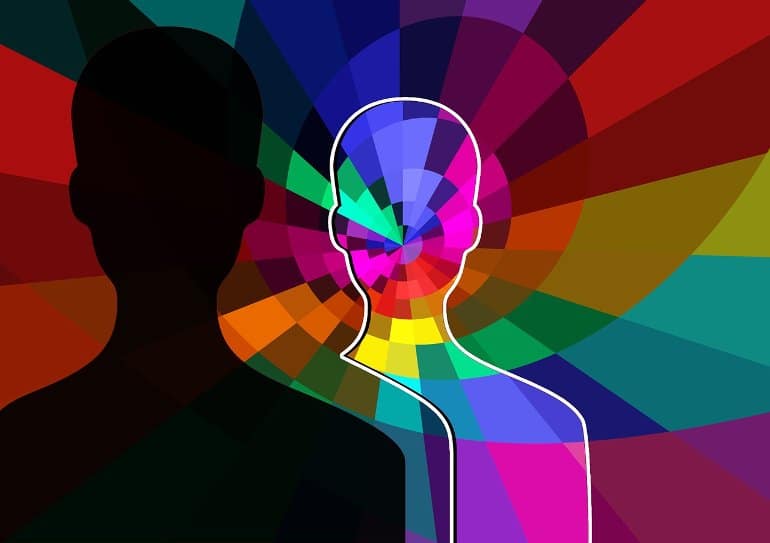Summary: The semantic networks in people with schizophrenia differ significantly from those in people without the mental health disorder.
Source: Tokyo Medical and Dental University
In a study published last month in Schizophrenia Bulletin, researchers from Tokyo Medical and Dental University (TMDU) revealed that the semantic networks in the brains of schizophrenia patients are very different from those in healthy humans.
Schizophrenia is a mental illness that usually presents with delusions, hallucinations, and incoherent speech and behavior. The fundamental feature of the disease is ‘loosening of associations’ between ideas, which disrupts patients’ thought processes.
Now, researchers from Japan have tried to study the structural characteristics of the semantic networks in the brain that reflect thought disorder in schizophrenia.
Semantic processing seems to be impaired in patients with schizophrenia because of the functional disconnection between neurons. To characterize this pathology, researchers from TMDU investigated the brain activity of 14 patients with schizophrenia and 17 healthy individuals.
All of the participants underwent functional magnetic resonance imaging (fMRI) while watching soundless color movies.
“It is now possible to quantitatively evaluate the semantic representations of individual words in the brain, thanks to fMRI showing brain activity and language processing techniques,” says Hidehiko Takahashi, senior author.
To understand the difference in brain characteristics, the team analyzed a large-scale connectivity structure of neuronal representations, or a “semantic brain network,” using network analysis or graph theory, which deals with the mathematical characteristics of such graphs.

The team found that the semantic networks in the brains of healthy individuals have small-world properties similar to natural languages, meaning that concepts are organized into specific semantic domains and are globally connected, enabling coherent thought and speech.
In contrast, the semantic networks of schizophrenia patients were highly modular with distinct categories, and the structure within each category was disorganized and randomized.
These impairments in semantics and associations contribute to thought disorder, including delusion.
This study provided evidence for the ‘loosening of associations’ observed in patients with schizophrenia.
This new approach can help us understand how the brains of patients with schizophrenia or any other thought disorder perceive the world. It can even help to inform the development of new treatments for psychiatric diseases.
About this schizophrenia research news
Author: Hidehiko Takahashi
Source: Tokyo Medical and Dental University
Contact: Hidehiko Takahashi – Tokyo Medical and Dental University
Image: The image is in the public domain
Original Research: Open access.
“Disorganization of Semantic Brain Networks in Schizophrenia Revealed by fMRI” by Hidehiko Takahashi et al. Schizophrenia Bulletin
Abstract
Disorganization of Semantic Brain Networks in Schizophrenia Revealed by fMRI
Objectives
Schizophrenia is a mental illness that presents with thought disorders including delusions and disorganized speech. Thought disorders have been regarded as a consequence of the loosening of associations between semantic concepts since the term “schizophrenia” was first coined by Bleuler. However, a mechanistic account of this cardinal disturbance in terms of functional dysconnection has been lacking. To evaluate how aberrant semantic connections are expressed through brain activity, we characterized large-scale network structures of concept representations using functional magnetic resonance imaging (fMRI).
Study Design
We quantified various concept representations in patients’ brains from fMRI activity evoked by movie scenes using encoding modeling. We then constructed semantic brain networks by evaluating the similarity of these semantic representations and conducted graph theory-based network analyses.
Study Results
Neurotypical networks had small-world properties similar to those of natural languages, suggesting small-worldness as a universal property in semantic knowledge networks. Conversely, small-worldness was significantly reduced in networks of schizophrenia patients and was correlated with psychological measures of delusions. Patients’ semantic networks were partitioned into more distinct categories and had more random within-category structures than those of controls.
Conclusions
The differences in conceptual representations manifest altered semantic clustering and associative intrusions that underlie thought disorders. This is the first study to provide pathophysiological evidence for the loosening of associations as reflected in randomization of semantic networks in schizophrenia. Our method provides a promising approach for understanding the neural basis of altered or creative inner experiences of individuals with mental illness or exceptional abilities, respectively.







